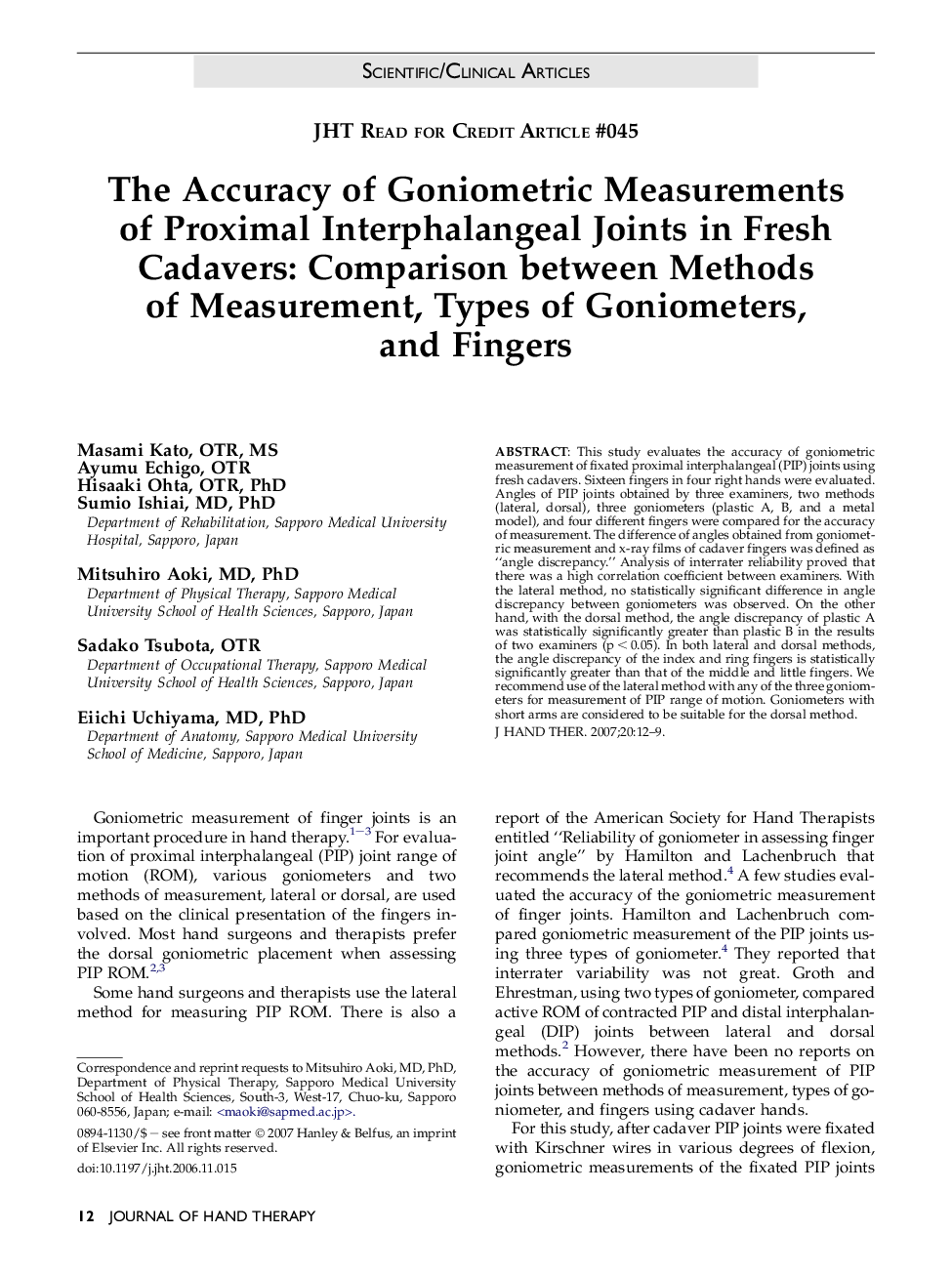| Article ID | Journal | Published Year | Pages | File Type |
|---|---|---|---|---|
| 2695118 | Journal of Hand Therapy | 2007 | 8 Pages |
This study evaluates the accuracy of goniometric measurement of fixated proximal interphalangeal (PIP) joints using fresh cadavers. Sixteen fingers in four right hands were evaluated. Angles of PIP joints obtained by three examiners, two methods (lateral, dorsal), three goniometers (plastic A, B, and a metal model), and four different fingers were compared for the accuracy of measurement. The difference of angles obtained from goniometric measurement and x-ray films of cadaver fingers was defined as “angle discrepancy.” Analysis of interrater reliability proved that there was a high correlation coefficient between examiners. With the lateral method, no statistically significant difference in angle discrepancy between goniometers was observed. On the other hand, with the dorsal method, the angle discrepancy of plastic A was statistically significantly greater than plastic B in the results of two examiners (p < 0.05). In both lateral and dorsal methods, the angle discrepancy of the index and ring fingers is statistically significantly greater than that of the middle and little fingers. We recommend use of the lateral method with any of the three goniometers for measurement of PIP range of motion. Goniometers with short arms are considered to be suitable for the dorsal method.
